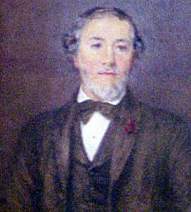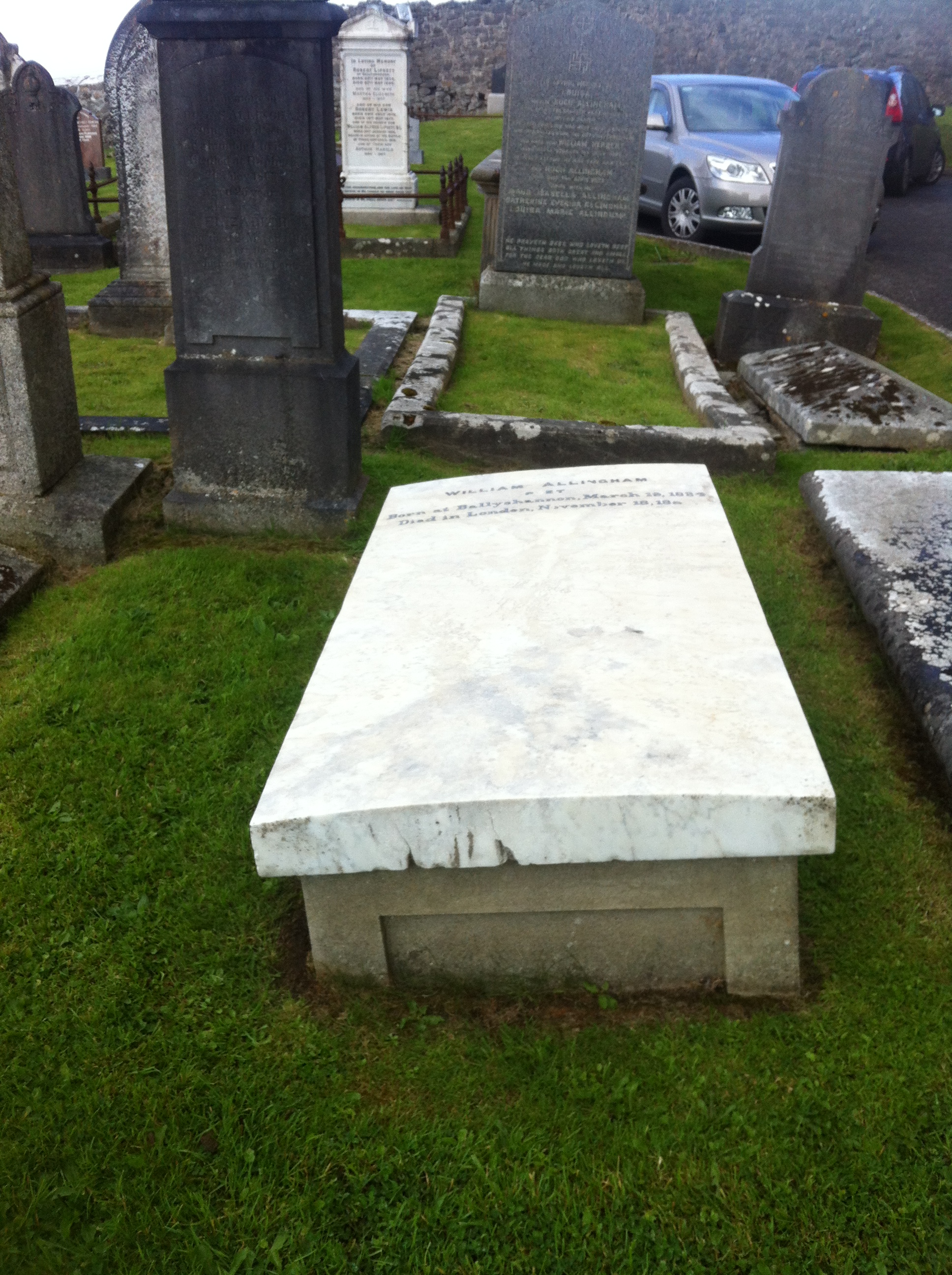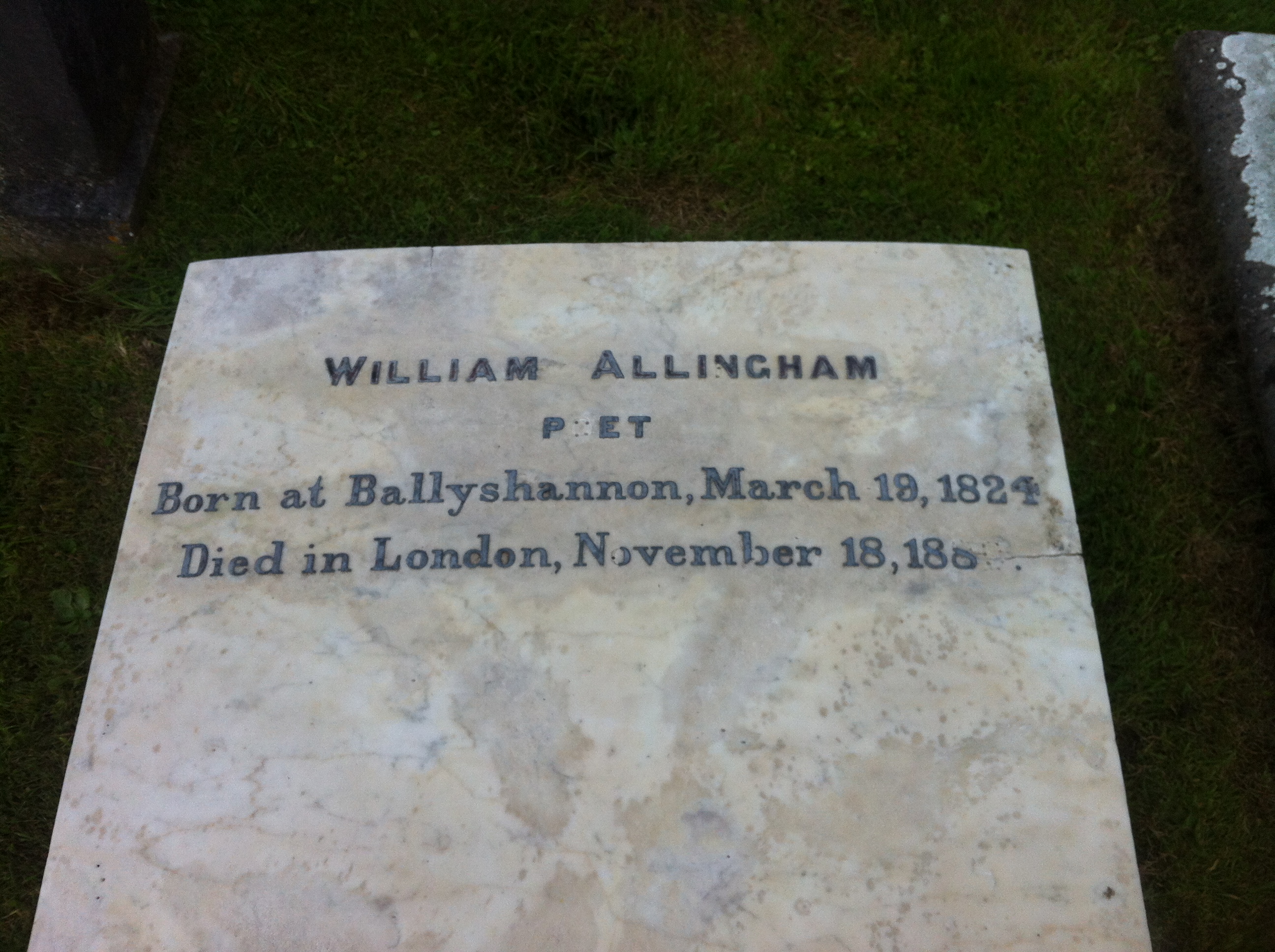Author. He gained fame as an Irish poet, diarist, and editor. As a prominent Anglo-Irish poetry figure, he wrote several volumes of lyric verse during the 19th century. Born the son of an English banker, he was nine years old when his mother died. At an early age, he took a post with the government at a custom-house, remaining in the position for about thirty years. The 1850 collection entitled "Poems" was his first published piece and included his poem "The Faeries," which was a much-anthologized poem about fairies. The poem has been used in Hollywood films in the 20th century, including "Willy Wonka and the Chocolate Factory" in 1971. His other collections included "Day and Night Songs" in 1855, "Songs, Poems and Ballads" in 1877, "Evil May Day" in 1883, and "Blackberries" in 1884. He is better known for his 1907 posthumously published "Diary," in which he records his lively encounters with Lord Tennyson, Thomas Carlyle, and other writers and artists. In April of 1870, he relocated from Ireland to London for a literary post and eventually became the editor of "Fraser's Magazine for Town and Country." He married the much younger Helen Paterson, who was a well-known watercolorist and illustrator. The couple moved to Surrey and had three children. After his health declined, he returned to London. His last collection was "Life and Phantasy" in 1888. Upon his death, his remains were cremated and repatriated to Ireland for burial.
Author. He gained fame as an Irish poet, diarist, and editor. As a prominent Anglo-Irish poetry figure, he wrote several volumes of lyric verse during the 19th century. Born the son of an English banker, he was nine years old when his mother died. At an early age, he took a post with the government at a custom-house, remaining in the position for about thirty years. The 1850 collection entitled "Poems" was his first published piece and included his poem "The Faeries," which was a much-anthologized poem about fairies. The poem has been used in Hollywood films in the 20th century, including "Willy Wonka and the Chocolate Factory" in 1971. His other collections included "Day and Night Songs" in 1855, "Songs, Poems and Ballads" in 1877, "Evil May Day" in 1883, and "Blackberries" in 1884. He is better known for his 1907 posthumously published "Diary," in which he records his lively encounters with Lord Tennyson, Thomas Carlyle, and other writers and artists. In April of 1870, he relocated from Ireland to London for a literary post and eventually became the editor of "Fraser's Magazine for Town and Country." He married the much younger Helen Paterson, who was a well-known watercolorist and illustrator. The couple moved to Surrey and had three children. After his health declined, he returned to London. His last collection was "Life and Phantasy" in 1888. Upon his death, his remains were cremated and repatriated to Ireland for burial.
Bio by: Linda Davis
Inscription
"Poet"
Family Members
Advertisement
See more Allingham memorials in:
Records on Ancestry
Sponsored by Ancestry
Advertisement






